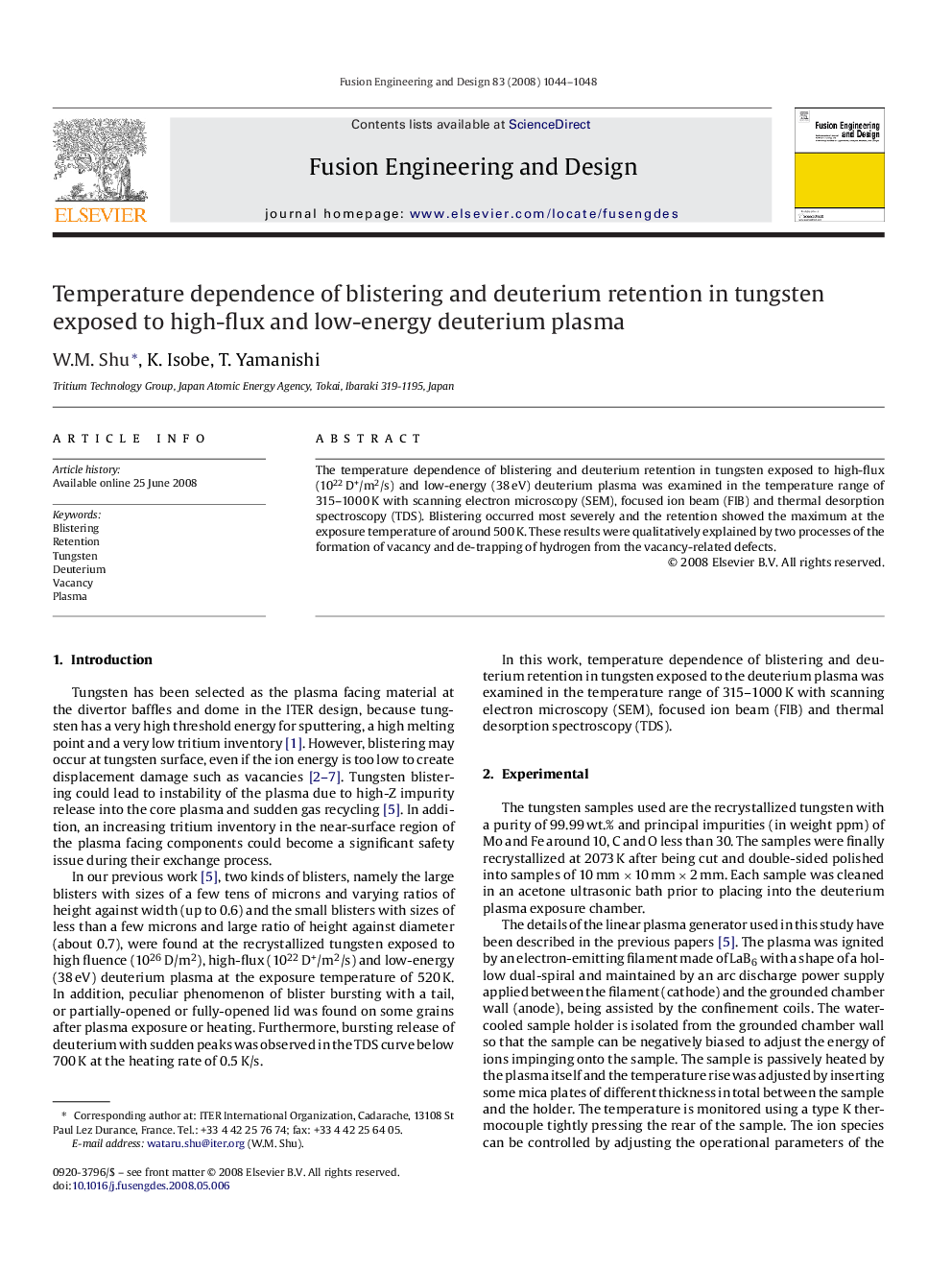| Article ID | Journal | Published Year | Pages | File Type |
|---|---|---|---|---|
| 273033 | Fusion Engineering and Design | 2008 | 5 Pages |
Abstract
The temperature dependence of blistering and deuterium retention in tungsten exposed to high-flux (1022 D+/m2/s) and low-energy (38 eV) deuterium plasma was examined in the temperature range of 315–1000 K with scanning electron microscopy (SEM), focused ion beam (FIB) and thermal desorption spectroscopy (TDS). Blistering occurred most severely and the retention showed the maximum at the exposure temperature of around 500 K. These results were qualitatively explained by two processes of the formation of vacancy and de-trapping of hydrogen from the vacancy-related defects.
Related Topics
Physical Sciences and Engineering
Energy
Energy Engineering and Power Technology
Authors
W.M. Shu, K. Isobe, T. Yamanishi,
